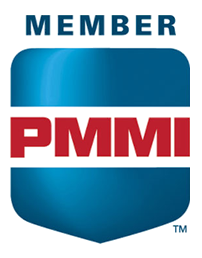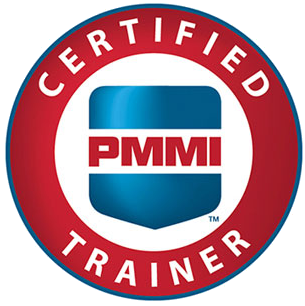Twist and Inverting
Timing Screw Inverting System: This compilation features 2 different inverting systems, first being used to invert, rinse, and revert container back to upright position, and the second being used to invert, rinse, code date, reject and revert container back to upright position with the use of timing screws.
Ampoule Twisting (Pharmaceutical): Our engineers devised a custom drive assembly to accept the ampoules from a mass feed, feeding them perpendicular into the timing screw. The ampoules are supported by a back-pressure arm/rail that continues to drive the ampoules into the timing screw pockets. The timing screw will single file the product, increasing the pitch up to 33mm to twist the ampoule 90 degree so it is on the bottom side of the timing screw. The ampoule, handed off to the Morrison star wheel, is fed tangentially and then handed off to the gripper conveyor. Morrison equipped stars and guides for this system with a top/bottom support rail in order to positively control the ampule so the customer could bring the gripper between these elevations while grabbing the ampoule.
Inverting Twist: This system takes a round, tapered container and inverts the containers 180 degrees from upside down to right side up. This exact inverting twist is located toward the end of the automation line, as it is easier to run tapered containers upside down to avoid containers from “buckling.” These twists can be inverting systems can be designed for tapered containers to run right side up or upside down.
Cylinder Up-Ending: This video highlights Morrison handling two lanes of chewing tobacco logs. The containers are initially controlled in a lug conveyor. The timing screw(s) are mechanically linked to the lug conveyor so that there is a smooth transfer from the lug into the timing screw. Once controlled on top of the timing screw, Morrison takes advantage of gravity to guide the containers into a standing up position. Once they are controlled in a standing up position, they are released onto the conveyor and rails combine the containers into one common lane.
NOTE: For a tall, skinny container like this, it is extremely important that the discharge conveyor run the same linear speed as pitch of the timing screw. This will ensure that there is no “jump” in the control of the containers as they are released from the timing screw.
NOTE #2: The end user originally was using a gravity twist to stand the containers up. By replacing the gravity twist with the timing screw twist, production increased by 20% at the plant.
Carton Twist/Upending: This system was designed for the pharmaceutical industry after a Horizontal Cartoner (Jones was the manufacturer). With the containers coming out of the cartoner on their side, it was important that the containers be stood upright prior to the case packing process. Morrison accepts the rectangle cartons lying on their side, and utilize shingle infeed rails to create separation between containers for the timing screws to gain control of the product. Once controlled in the timing screw pockets, Morrison transfers the cartons to an overhead timing screw. This screw works in conjunction with a guide/twist to rotate the carton about the timing screw to stand the product up on its end. Once stood up on its end, the carton is discharged onto the conveyor and sent down stream to the case packer. As you will notice, the carton is always controlled in the timing screw, as Morrison’s philosophy is to always maintain a positive control of the container.
Inverter for Code Dating: this application was done for Del Monte Foods on their high speed canning line. The plant needed to put a code date on the bottom side of the container. Originally the plant was shooting the ink from the bottom side of the container but was having a lot of issues with the printer failing due to gravity bringing excess ink and dirt directly back onto the printer. Not only were they having issues due to shooting directly in the air, but were also having issues with the code dates “smearing” due to the high speeds. This system alleviates both of those issues. First, Morrison inverts all of the containers with a power twist to ensure that the code dater can shoot directly down on the container. Then you will notice that there is an orange eagle belt on the backside of the system. This belt is mechanically linked with the timing screw so that they run at the same speed. The eagle belting applies pressure to the can so it sits in the screw tightly, and keeps the container from spinning because it is traveling at the same linear speed as the timing screw. This can allow the code date to be applied without being smudged/smeared.
50 caliber bullets: There are a wide range of products that can utilize a timing screw. This particular application requires a drop of wax to be placed on the top end of the bullet for weathering purposes. This line has one head which places the drop of wax on each bullet. We first will stand the bullet up so that the top end is in the air. We do not need back pressure to force the bullet through the twist, but allow the twist to control it slowly as it moves down the timing screw. . Instead of an indexing application, we design the screw to have a dwell. The vertical design in the dwell allows the product to pause for a split second. The drop of wax is placed on top of the bullet while it is in the dwell to ensure accuracy of placement. Eliminating the indexing operation is also a benefit because it extends the life of the machine and components
High Speed Bottle Inverting: This system is designed to work in conjunction with a rotary rinsing machine. The video does not include the large rotary rinser, but does include test star wheels to simulate the handoff process to the main rotary turret. Morrison inverts the containers over the timing screw, transfers the container into a series of star wheels (representative of the OEM rinser), transfers the containers back to a timing screw where they are inverted once a again to be right side up.
NOTE: To pass the FAT, the customer required Morrison to run the same containers around a loop conveyor for 8 hours without breaking a single bottle.
2-1 Combiner/Stacker/Grouper: This video highlights how Morrison handles a VERY common product; the single serve applesauce/fruit cups that are stacked lid-on-lid in a cardboard sleeve. Anytime these containers are presented in a store, Morrison has been involved in the packaging process. There are two lanes of containers that are being controlled by the same timing screw. One of the lanes utilizes a power twist to invert the containers over the timing screw. Since both lanes are being controlled in the same screw, the can be stacked directly on top of each other. Once the containers are stacked, the containers transfer to the grouping screw. In the last screw, the containers are positioned accordingly to create the 6 pack (3-over-3) container figuration. If these timing screws were changed out, this could also be a 4 pack (2-over-2)
Alternate Inverting for Case Packing: Many people have either used or own a Keurig K-cup machine. Those who have used the machines have seen that the containers are packaged in the box with an alternating 1-up-1-down pattern. Companies package the containers in this format to be more efficient with their packaging. By nesting the containers with this alternating pattern, a smaller carton/box can be used so more product can be fit in the same amount of space. The Morrison system is placed upstream of a Pick & Place cartoning machine. Morrison presents the containers to the cartoner with the alternating 1-up-1-down pattern. Morrison accepts the containers in a single lane, divides the containers into 2-equal lanes by utilizing a vacuum star wheel. Every other pocket in the star wheel is connected to a vacuum manifold to pull the product off into the second lane. Once divided into two lanes, the containers then travel through a twist unit. Every single container travels through the inverting twist. While in the twisting mechanism, the containers are detected and a “flipper” actuates on every other container it sees. By flipping every other container that travels through the twist, Morrison creates the alternating 1-up-1-down pattern.













